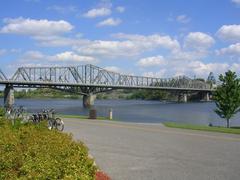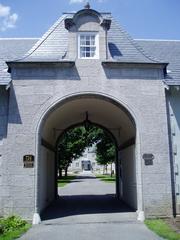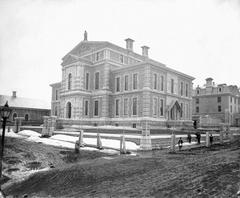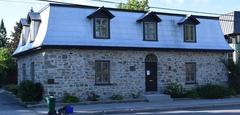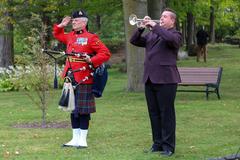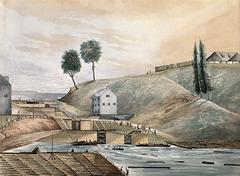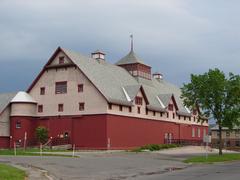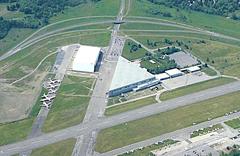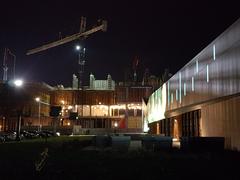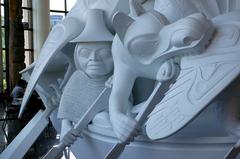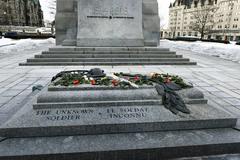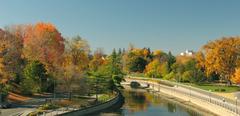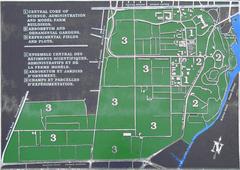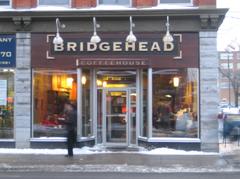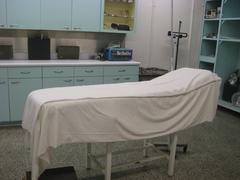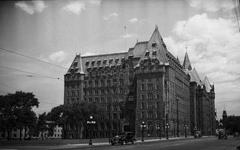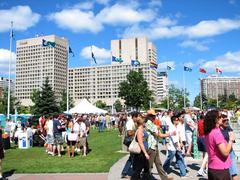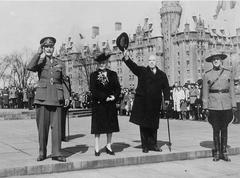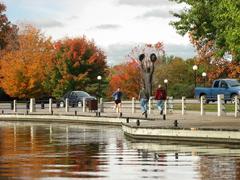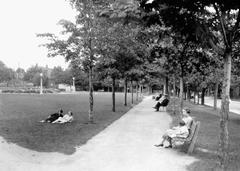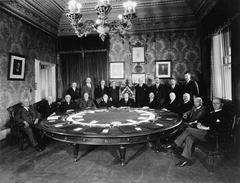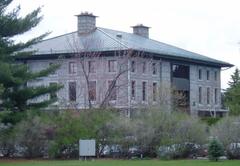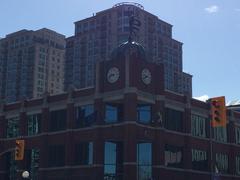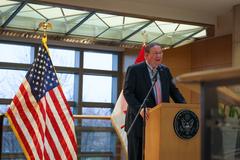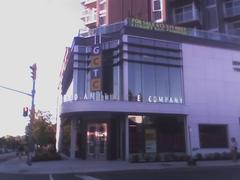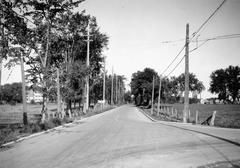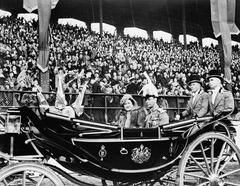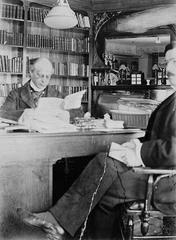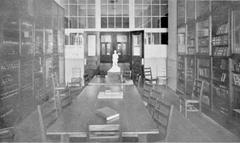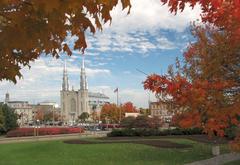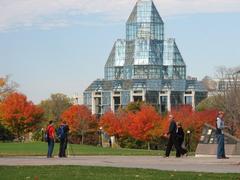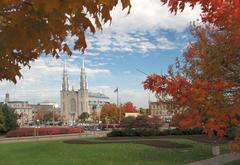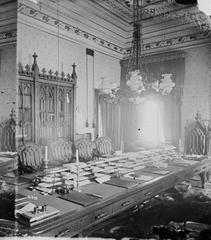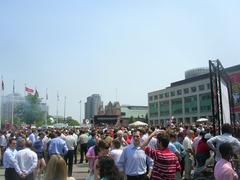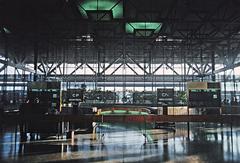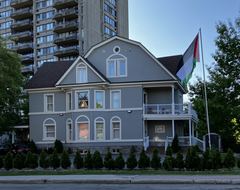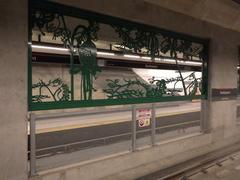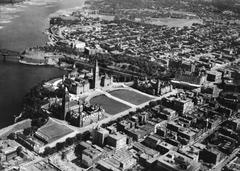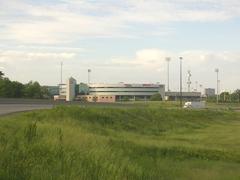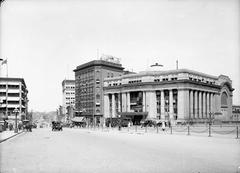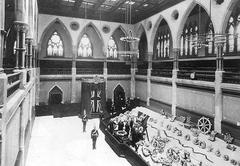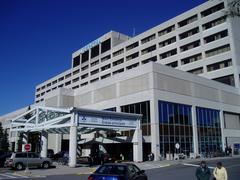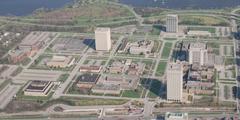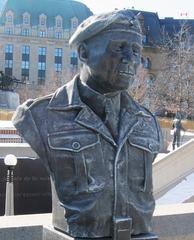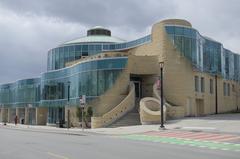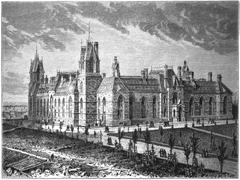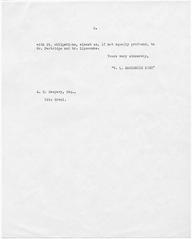
Connaught Building Ottawa: Visitor Guide, History, and Architectural Highlights
Date: 04/07/2025
Introduction
The Connaught Building stands as one of Ottawa’s most distinguished heritage landmarks, representing the city’s federal architectural ambitions in the early 20th century. Completed in 1916 and named for Prince Arthur, Duke of Connaught and Strathearn, this imposing structure is a testament to Canada’s nation-building era. Designed by Chief Dominion Architect David Ewart, the building’s Tudor Gothic Revival style—infused with Beaux-Arts symmetry—contributes to its status as a “crown jewel” among Canada’s federal buildings (Glue Ottawa; Parks Canada). Though the Connaught Building now serves as the headquarters of the Canada Revenue Agency and is not generally open for public tours, its striking exterior and central location make it a must-see for architecture enthusiasts and visitors exploring Ottawa’s historic core.
Table of Contents
- Historical Background
- Architectural Features
- Visiting Information
- Nearby Attractions
- Visuals and Media Suggestions
- Frequently Asked Questions (FAQ)
- Resources and Official Links
- Conclusion and Final Tips
Historical Background
Origins and Purpose
Constructed between 1913 and 1916, the Connaught Building originally functioned as a customs warehouse, handling the inspection and taxation of goods entering Ottawa—especially vital during World War I. Its creation coincided with Ottawa’s transformation into a monumental national capital, and its naming honored the then-Governor General of Canada (Glue Ottawa).
Architectural Vision and Style
David Ewart’s design for the Connaught Building exemplifies the “modified Tudor Gothic Revival” style. The fortress-like sandstone façade, accented by crenellated parapets, turrets, oriel bays, and pointed arches, imbues the building with the gravitas befitting a federal institution. The Beaux-Arts influence is seen in the building’s symmetry and axial planning, aligning it with the nearby Parliament Buildings (Parks Canada; Canada.ca).
Urban Development Role
Occupying a full city block at 555 Mackenzie Avenue (also referenced as 550 Sussex Drive), the Connaught Building anchors Ottawa’s ceremonial governmental district. Its prominent location—opposite Major’s Hill Park and within walking distance to Parliament Hill, Château Laurier, and the ByWard Market—ensures its role as a visual and cultural anchor in the capital (GPSmyCity).
Heritage Designation
Recognized for its architectural and historical significance, the Connaught Building became a National Historic Site in 1990 and is classified as a “Classified Federal Heritage Building”—Canada’s highest level of protection for federal heritage sites (Parks Canada; Doors Open Ontario).
Architectural Features
Exterior Details and Materials
The Connaught Building’s exterior is defined by:
- Rusticated sandstone cladding with a granite base and Wallace stone detailing, creating a robust, textured appearance.
- Crenellated parapets and turrets along the roofline, emphasizing its fortress-like character.
- Tudor-arched windows and doors, ornamental buttresses, and intricate stone carvings, including coats of arms and rosettes.
- Symmetrical massing and projecting tower-like pavilions, reinforcing both verticality and grandeur (Parks Canada; Today in Ottawa’s History).
The main entrance, beneath an elaborately detailed tower, serves as the façade’s focal point and is a prime example of Tudor-Revival ornamentation (Canada.ca).
Structural Innovations and Layout
Built with a steel and concrete frame for fireproofing and durability, the Connaught Building originally featured one basement and seven above-ground floors. Renovations in 1971 added two more levels within the existing structure, now totaling eight above-grade floors on the Sussex side. The sloping site allows for unique entry points on Mackenzie Avenue at multiple levels (Wikipedia).
While interior spaces have been heavily modified for modern office use, the exterior remains true to Ewart’s original vision (Today in Ottawa’s History).
Visiting Information
Hours, Tickets, and Accessibility
- Visiting Hours: The Connaught Building is not open for public interior tours. The exterior is viewable year-round at any time.
- Tickets: No tickets or reservations are required to view the building from the outside.
- Accessibility: Surrounding sidewalks are accessible, with curb cuts and flat terrain. There are no interior accommodations for visitors, as the building remains in federal use.
Getting There
The Connaught Building is located at 555 Mackenzie Avenue, easily reached via Ottawa’s public transit system. OC Transpo bus stops and O-Train stations are within a short walk. Parking is limited—using public transportation is recommended.
Tips for Visitors
- Photography: Early morning or late afternoon offers the best lighting for exterior shots.
- Combine Visits: Plan a self-guided walking tour including Parliament Hill, Château Laurier, ByWard Market, and the Rideau Canal for a rich historical experience (GPSmyCity).
- Special Events: During Doors Open Ottawa (early June), occasional interior access is offered—check Doors Open Ottawa for details.
Safety and Etiquette
- Remain on public sidewalks and respect preservation regulations.
- Photography for personal use is encouraged; commercial photography requires federal permission.
Nearby Attractions
- Parliament Hill: Canada’s seat of government, offering guided tours and ceremonial events.
- ByWard Market: Historic district with shops, restaurants, and markets.
- Château Laurier: Iconic hotel with Châteauesque architecture.
- Rideau Canal: UNESCO World Heritage Site for walking, biking, and winter skating.
- National War Memorial and Confederation Park: Both within walking distance and ideal for further exploration and relaxation.
Visuals and Media Suggestions
Enhance your experience by viewing high-resolution images of the Connaught Building’s architectural features on heritage and tourism sites. Useful alt tags for SEO include “Connaught Building Ottawa exterior” and “Tudor Gothic Ottawa architecture.” Maps and virtual tours are available via Ottawa tourism resources.
Frequently Asked Questions (FAQ)
Q: Can I tour the interior of the Connaught Building?
A: The building is not generally open to the public. Occasionally, special events such as Doors Open Ottawa allow limited interior access.
Q: Are tickets or fees required?
A: No, viewing the exterior is free and open to all.
Q: Is the site accessible for visitors with mobility challenges?
A: The building’s exterior is accessible; interior areas are not open to the public.
Q: What nearby attractions should I include?
A: Parliament Hill, ByWard Market, Rideau Canal, and Château Laurier are all nearby and worth visiting.
Q: Are guided tours available?
A: While interior tours are rare, the building is featured in many self-guided and professionally guided walking tours of Ottawa’s historical sites.
Resources and Official Links
- The Monumental Buildings of Ottawa, Glue Ottawa
- Connaught Building National Historic Site, Parks Canada
- Connaught Building Architectural Details, Parks Canada
- Connaught Building Ottawa, Canada.ca News Release
- Connaught Building History, Today in Ottawa’s History
- Connaught Building Visitor Information, Doors Open Ontario
- Historical Buildings Walking Tour, GPSmyCity
- Ottawa Tourism Official Site
Conclusion and Final Tips
The Connaught Building is an enduring symbol of Canada’s architectural and governmental heritage, admired for its fortress-like façade, detailed stonework, and prominent presence in Ottawa’s civic core. While interior access is limited, the exterior remains a highlight for architectural photography and historical exploration. Pair your visit with a tour of Ottawa’s other landmarks, and consult local tourism resources for event updates and additional visitor information.
To further enrich your Ottawa experience, consider downloading the Audiala app for self-guided tours and real-time information on local heritage sites. Stay connected through official tourism channels and enjoy discovering the architectural treasures of Canada’s capital.


